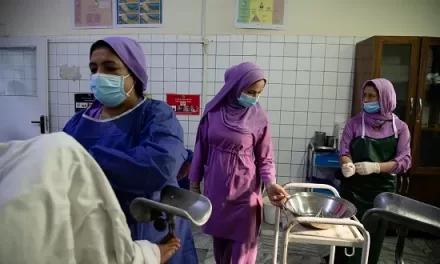Khambhat, Gujarat, India – A recent study by researchers at the Indian Council of Medical Research (ICMR) has revealed that workers in the jewellery and decorative item industry, particularly those working with agate stones, are at a high risk of latent tuberculosis infection (LTBI). This form of TB occurs without any symptoms and is prevalent among agate stone workers, who frequently inhale silica dust during their work.
The study, conducted by ICMR’s National Institute of Occupational Health in Ahmedabad, tested 463 agate-stone workers in Khambhat, Gujarat. The findings, published in Nature’s Scientific Reports journal, showed that 58 percent of these workers have LTBI. This rate is nearly double the national average of 31 percent and significantly higher than the 41 percent reported for other high-risk groups.
Agate stones, which contain over 60 percent free silica, are polished, chipped, and drilled to create jewellery and decorative items. This process generates silica dust, which, when inhaled, impairs the immune system and increases the risk of developing TB. The researchers used an Interferon Gamma Release Assay, a blood test that measures the immune response to TB bacteria, to determine the prevalence of LTBI among the workers.
The study highlighted that workers involved in polishing and chipping, which generate more dust and finer particles, showed higher LTBI positivity compared to those involved in drilling. Factors such as low income, poor nutrition, and overcrowded living conditions further increase the workers’ susceptibility to LTBI.
The researchers emphasized the need to include the agate stone worker community as a high-risk group for LTBI testing in India’s national TB guidelines. Although the 2021 tuberculosis (TB) preventive treatment guidelines in India included silicosis as a screening group, latent TB infection testing for individuals exposed to silica dust is still underemphasized.
To combat this issue, the researchers called for more cost-effective testing methods, such as Cy-Tb, and the implementation of shorter, more manageable TB preventive treatment plans. They also recommended placing craftspeople who have inhaled silica dust for five years or more on preventive treatment without the need for LTBI testing.
India, which aims to eliminate TB by 2025, faces a significant challenge with an estimated 0.35-0.4 billion TB infections and 2.6 million annual TB cases. Studies indicate that 5-10 percent of individuals with LTBI progress to active TB disease, typically within two years post-infection.
The findings of this study underscore the urgent need for targeted interventions and preventive measures to protect the health of agate stone workers and contribute to India’s broader TB elimination efforts.












